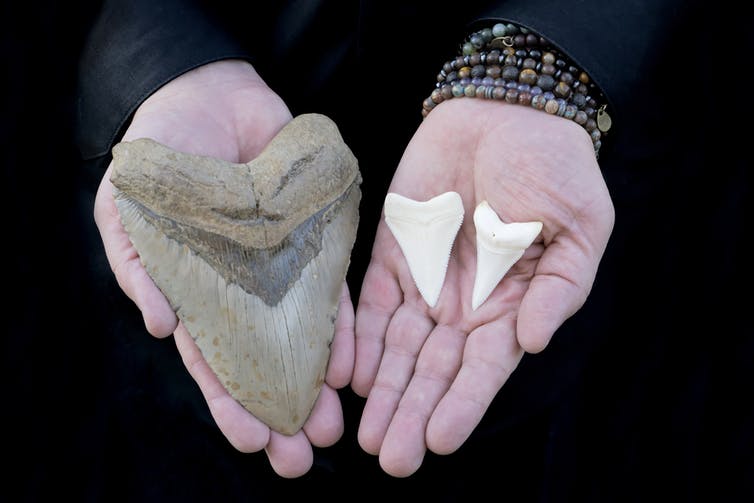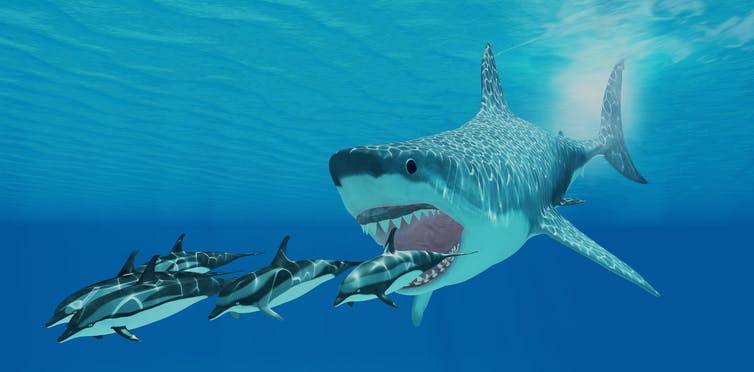
Curious Kids is a series for children of all ages. If you have a question you’d like an expert to answer, send it to [email protected].
When did the megalodon shark go extinct, and why? – Landon, age 10
Imagine traveling back in time and observing the oceans of 5 million years ago.
As you stand on an ancient shoreline, you see several small whales in the distance, gliding along the surface of an ancient sea.
Suddenly, and without warning, an enormous creature erupts out of the depths.
With its massive jaws, the monster crushes one of the whales and drags it down into the deep. Large chunks of the body are ripped off and swallowed whole. The rest of the whales scatter.
You have just witnessed mealtime for megalodon – formally known as Otodus megalodon – the largest shark ever.

At left, a megalodon tooth; at right, for comparison, two teeth from a great white shark.
Mark Kostich/iStock via Getty Images Plus
About the megalodon
As a scientist who studies sharks and other ocean species, I am fascinated by the awesome marine predators that have appeared and disappeared through the eons.
That includes huge swimming reptiles like ichthyosaurs, plesiosaurs and the mosasaurs. These incredible predators lived during the time of the dinosaurs; megalodon would not appear for another 50 million years.
But when it did arrive on the scene, about 15 million to 20 million years ago, the megalodon must have been an incredible sight.
A fully grown individual weighed about 50 metric tons – that’s more than 110,000 pounds (50,000 kilograms) – and was 50 to 60 feet long (15 to 18 meters). This animal was longer than a school bus and as heavy as a railroad car!
Its jaws were up to 10 feet (3 meters) wide, the teeth up to 7 inches (17.8 centimeters) long and the bite force was 40,000 pounds per square inch (2,800 kilograms per square centimeter).
Not surprisingly, megalodons ate big prey. Scientists know this because they’ve found chips of megalodon teeth embedded in the bones of large marine animals. On the menu, along with whales: large fish, seals, sea lions, dolphins and other sharks.

An artist’s vision of what megalodon might have looked like. Megalodon was found in the warm ocean waters of the tropics and subtropics. Its teeth have been found on every continent except Antarctica.
Corey Ford/iStock via Getty Images Plus
Are scientists sure megalodon is extinct?
Internet rumors persist that modern-day megalodons exist – that they still swim around in today’s oceans.
But that’s not true. Megalodons are extinct. They died out about 3.5 million years ago.
And scientists know this because, once again, they looked at the teeth. All sharks – including megalodons – produce and ultimately lose tens of thousands of teeth throughout their lives.
That means lots of those lost…


